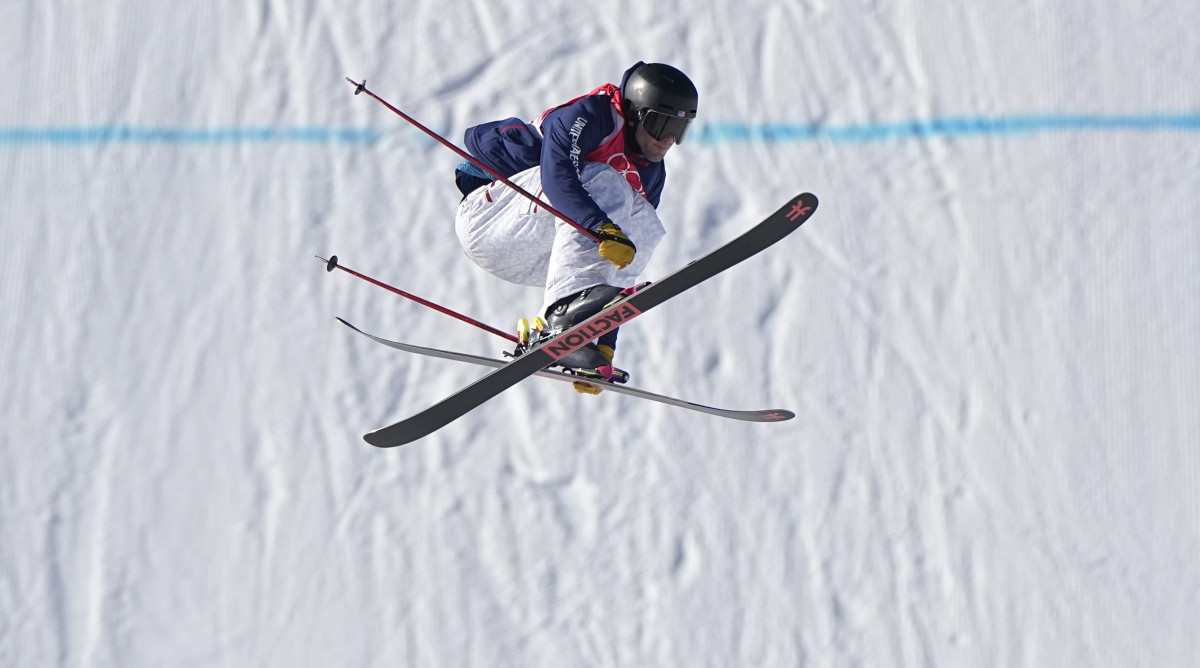Alex Hall Has Slopestyle Skiing Down to a Fine Art With Gold-Medal Performance
ZHANGJIAKOU, China — The Instagram biography of Alex Hall lists his location as, simply, “Modern Art Museum,” which is fitting because the U.S. freestyle skier turned the slopestyle course here into a flipping, twisting, soaring solo installation on Wednesday morning.
“He really just stays true to what he thinks is cool,” U.S. teammate Colby Stevenson gushed after Hall’s 90.01-point first run in the final held up for the gold medal. “He just thinks outside the box. He’s not afraid to do something that nobody ever’s done, just because he thinks he can.”
The picturesque setting at Genting Snow Park provided the perfect stage for such artistry, with its challenging sections of rails, ramps and pipes earning rave reviews from Winter Olympians—not to mention the “shred shed” built to mimic a Great Wall watch tower. But while slopestylists cite a “spin-to-win” culture that has taken over their sport in recent years, one that prioritizes dizzying rotations above all else, it was Hall’s avant-garde approach that stood out.
“The creativity and uniqueness are being recognized,” said Nick Goepper, a fellow American who took silver. “As soon as you max out what you can possibly do athletically, spinning around in circles, that's when the sport starts to get stale and sanitized.”

Born in Alaska but raised in Switzerland, where his American father and Italian mother both worked as university professors, Hall attributes his free-spirited mindset to a childhood devoid of the intense, single-minded training that others feel pressure to undertake.
“I feel like I’m a mellow guy, but I love a bunch of different things,” Hall said. “A lot of the skiing I do outside of competition, whether it’s street skiing—skiing a city and hitting hand rails—or powder skiing, bouncing off pillows and natural terrain and cliffs, that all helps so much with creativity.”
So it was that Hall shook off a week of pre-competition jitters about how his plan would look in the judges’ eyes and stayed true to himself. He rode two long rails at the start of his gold-medal-winning run, figuring their sheer length alone would be rewarded. He launched off the second jump backwards and completed a 720 rotation before “buttering” his ski noses into the slope to perform an additional 540. And he capped it off with a 1080 pretzel, defying physics by reversing direction at 900 degrees and completing the final 180 degrees in the opposite direction.
“He definitely had different ideas for his rail run, different ideas for his jump run, but he was like, ‘Ah, screw it,’” Stevenson said. “Even if it’s not going to be number one, he’s just more doing it for himself. He just does a good job of staying in the moment and enjoying every moment too.”
Hall, who finished 16th at the 2018 PyeongChang Games, continued a grand tradition of U.S. dominance in men’s slopestyle dating back to its 2014 Olympic debut in Sochi: At least one American skier has medaled in every event. A lot of this success is owed to the 27-year-old Goepper, now the proud owner of two silvers and a bronze. But relative newcomers like Hall, 23, and the seventh-place Stevenson, 24, have stepped up to lead the way too.
“Action sports was born in America in southern California, and it has this individualistic, creative spirit,” Goepper said. “And that’s what America is all about.”

It is certainly what Hall is all about. Speaking to reporters in the mixed zone, his fingers nearly frozen from clutching the American flag that was draped around his shoulders, the Salt Lake City resident declared 11 times in five minutes that he was “stoked” about winning gold.
Watch the Winter Olympics with fuboTV: Start with a 7-day free trial!
Then he said this: “It sounds really cliché, but I’ve always told myself: ‘If I’m not having fun doing it, then there’s really no reason to do it,’ so I might as well do what brings me all this joy. For sure, getting up at 6 a.m., and it's like negative-30 out for the first run, I was like, ‘Okay, this is a little heavy right now.’ But then I go do a couple fun tricks in my run, and it just reminds me: This is why you do it, and this is what you love about it.”
A great quote with a great lesson. Perhaps someone should print it out and hang it in a museum.
More Olympics Coverage:
- Team USA’s Hall, Goepper Capture Gold, Silver in Men’s Freeski Slopestyle
- Women's Figure Skating Marred by Kamila Valieva's Controversial Return to Ice
- Dutch Speedskating Legend Ireen Wüst’s Grand Finale
- 2022 Winter Olympics Medal Count: How Each Country Has Fared in Beijing
Sports Illustrated may receive compensation for some links to products and services on this website.
